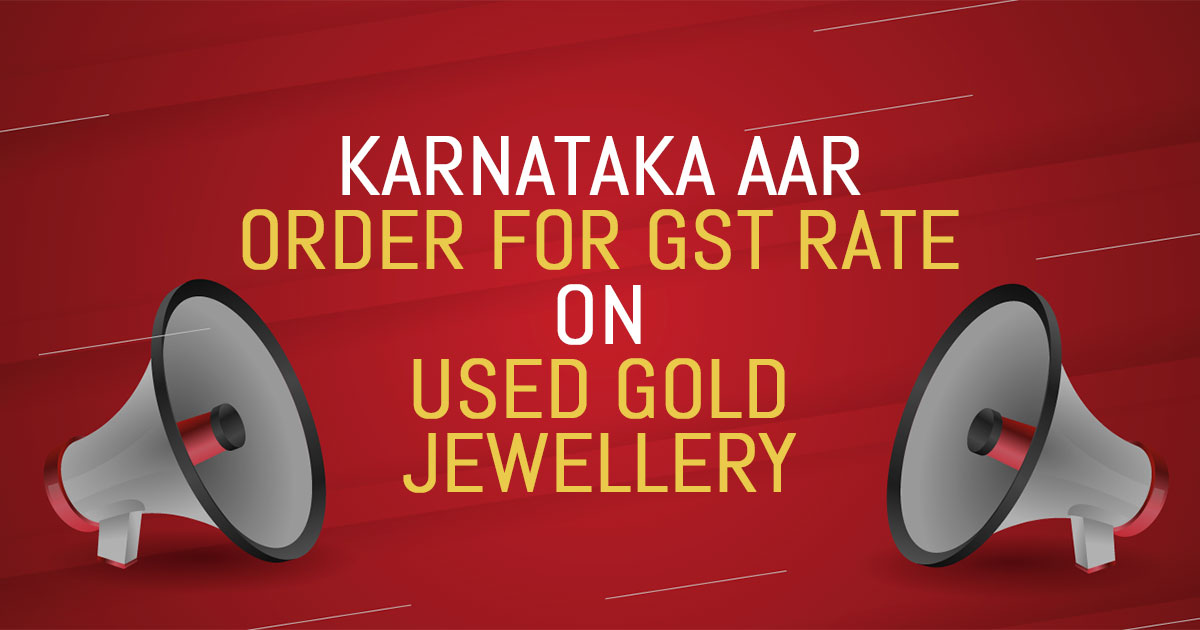
The Authority for Advance Ruling, Karnataka has recently held that the difference between the buying price and the selling price of second-hand jewellery shall be the base value for levying the Goods and Services Tax (GST). Experts believe that the aforesaid ruling shall bring a lot of clarity on various aspects of taxation and shall also assist buyers in decision making.
Adding further, “The applicant in this matter is the Bengaluru-based Company, Aadhya Gold Private Limited that is involved” in the trade of buying and selling second-hand gold jewellery. Worthwhile mentioning here that the jewellery once bought is sold in the same form to another registered person after minor processing such as polishing and cleaning. However, the applicant levies GST at the rate of 3 percent (CGST and SGST at 1.5 percent each) on the buyers based on the entire amount received from the buyers. He further mentioned that it is not possible to determine Input Tax Credit (ITC) 
Based on the above-mentioned facts and circumstances, the applicant was seeking an advance ruling on whether the GST has to be paid only on the difference between the selling price and the buying price.
The referred to Rule 32 (5) of CGST which emphasises that “Where a taxable supply is provided by a person dealing in buying and selling of second-hand goods i.e., used goods as such or after such minor processing which does not change the nature of the goods and where no input tax credit has been availed on the purchase of such goods, the value of supply shall be the difference between the selling price and the purchase price and where the value of such supply is negative, it shall be ignored.”
The focus of Authority for Advance Ruling (AAR) 
For the above-mentioned first condition, the concerned authority observed that the applicant is affecting the supply of second-hand jewellery for which GST at the rate of 3 percent is imposed.
Coming to the second condition, the concerned authority had gone through that submission whether the applicant has stated that he is not melting the jewellery so that it can be converted into bullion and then remarking it a new jewellery; but, only cleaning the old jewellery and just polishing it. Thereafter these goods are supplied to another person. Adding further, the applicant himself admitted that they have been invoicing the goods as the ‘used gold ornaments.’
AAR further commented that both the conditions are satisfied, consequently “valuation of supply of second-hand jewellery may be made as prescribed in sub-rule (5) of rule 32 of CGST Rules 2017.”
Rajat Mohan, Partner with AMRG & Associates commented that
“Jewellery being a high-value item, will be freed from a large component of GST which was a double whammy for the jewellery buyers. This ruling would also mean that jewellery will practically suffer a single stroke of taxation on the first point of sales if the form of such jewellery remains unfettered,”
Karnataka AAR held that GST has to be imposed on the difference between the buying and selling price of second-hand gold jewellery.